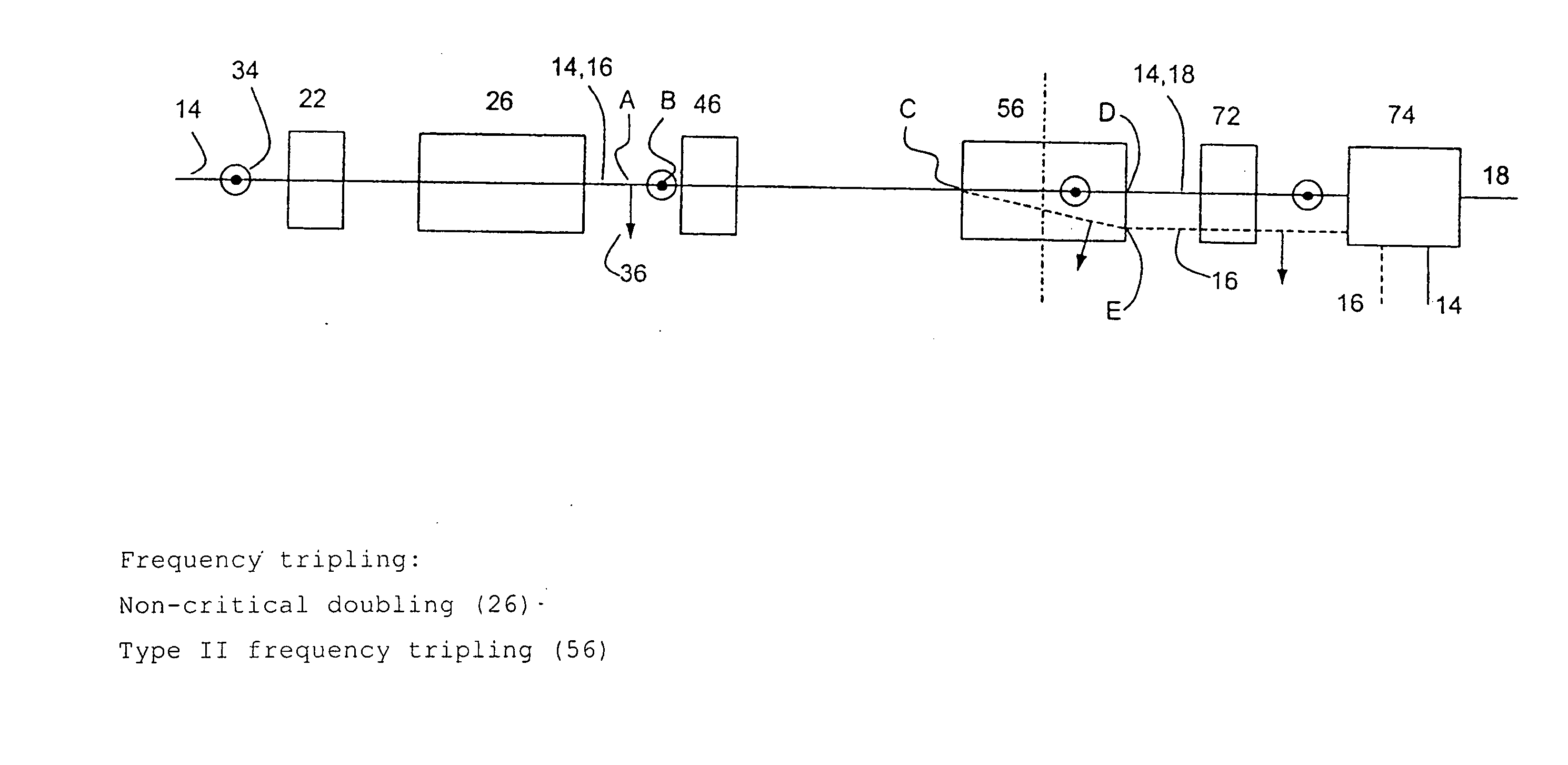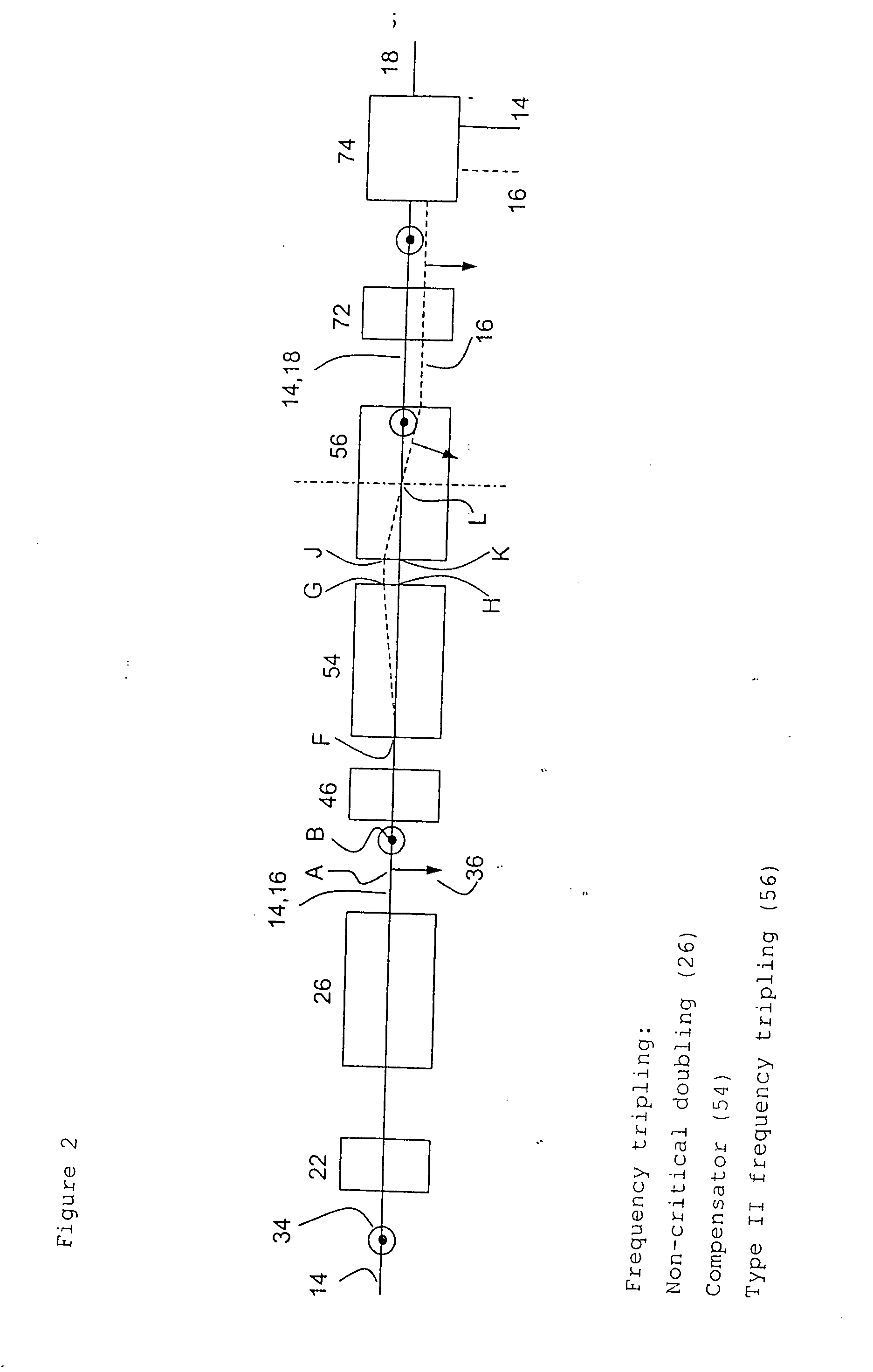Device and method for converting an optical frequency
a technology of optical frequency and conversion method, applied in the field of optical frequency conversion device and method, can solve the problems of optical loss increase, inability to complete spatial walk-off compensation, and high cost in practi
- Summary
- Abstract
- Description
- Claims
- Application Information
AI Technical Summary
Benefits of technology
Problems solved by technology
Method used
Image
Examples
Embodiment Construction
Frequency Tripling of a Mode-Coupled Nd:YVO.sub.4 Laser
[0064] To generate the third harmonic of a mode-coupled ND:YVO.sub.4 laser with a fundamental wavelength of 1064 nm, the frequency-doubled radiation with a wavelength of 532 nm is generated in lithium triborate (LBO). The frequency doubling is of type I, i.e. the polarisation of the generated second harmonic is perpendicular to the polarisation of the fundamental wave. The LBO crystal has a x-cut, i.e. the y and z main axes of the crystal are oriented perpendicular to the beam direction. The LBO is operated at a temperature of around 150.degree. C., where the frequency doubling is non-critical without a spatial walk-off between the fundamental wave and the frequency-doubled wave. The two beams run collinear in the LBO crystal and after emerging from the LBO crystal. The group speeds of the 1064 nm pulse and the 532 nm pulse are different in the LBO crystal because of dispersion. This gives a temporal offset between two pulses wh...
PUM
 Login to View More
Login to View More Abstract
Description
Claims
Application Information
 Login to View More
Login to View More - R&D
- Intellectual Property
- Life Sciences
- Materials
- Tech Scout
- Unparalleled Data Quality
- Higher Quality Content
- 60% Fewer Hallucinations
Browse by: Latest US Patents, China's latest patents, Technical Efficacy Thesaurus, Application Domain, Technology Topic, Popular Technical Reports.
© 2025 PatSnap. All rights reserved.Legal|Privacy policy|Modern Slavery Act Transparency Statement|Sitemap|About US| Contact US: help@patsnap.com



